You’re here because you love cars, and probably classic, vintage and ‘youngtimer’ (sorry, that word just slipped out) models specifically. As such you probably understand that as much enjoyment comes from certain features of older cars as it does the vehicles as a whole – and in turn, that while modern cars are undoubtedly safer, faster and better-equipped than they’ve ever been, you still probably miss some of the things they’ve lost along the way.
The more we thought about it, the more old car features we realised we were missing, until things got a little out of hand. So below you’ll find 20 odes to departed elements of the motoring experience, and no doubt you’ll be able to add a few more of your own – so fire away, in the comments further down.

Ignition keys
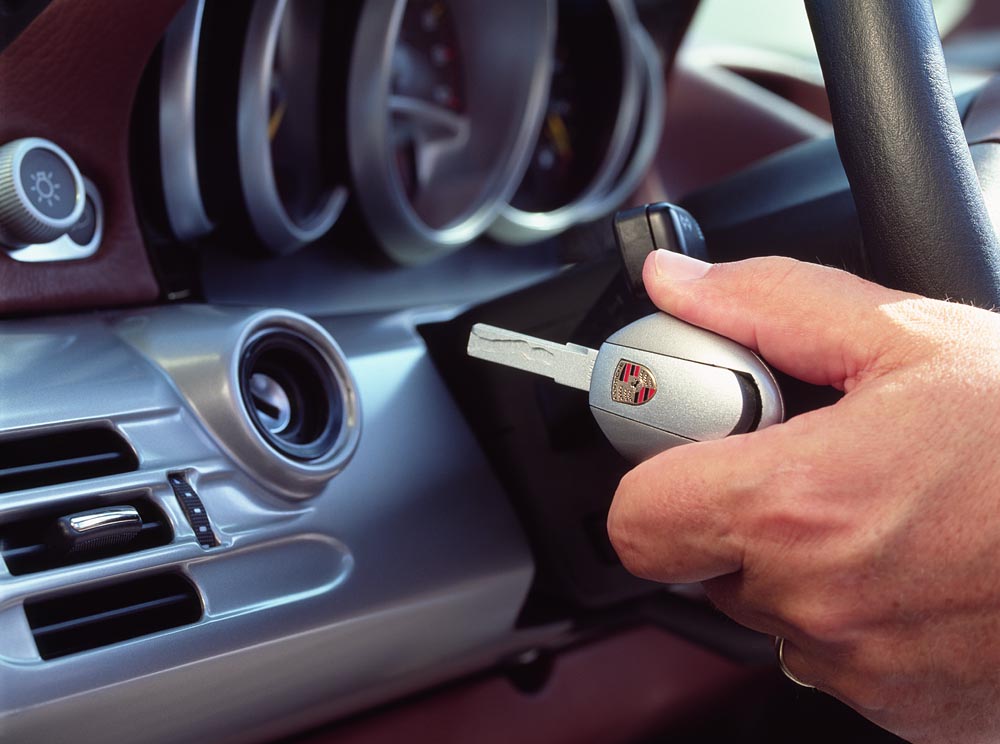
The startup procedure is one of the great joys of older cars, and an interaction overlooked next to steering feedback or gearshift feel. The act is enhanced further if the car is old enough to require a couple of pumps of the throttle to prime the carb or, better still, separate switches to turn on the fuel pump and ignition. Ultimately though it boils down to the twist of that key – a mechanical act to start a mechanical procedure. Like many on this list it’s been sacrificed at the altar of convenience, cost and safety but perhaps it can make a comeback when enthusiasts begin to crave more agency over the behaviour of their cars in the future.
Tall tyre sidewalls
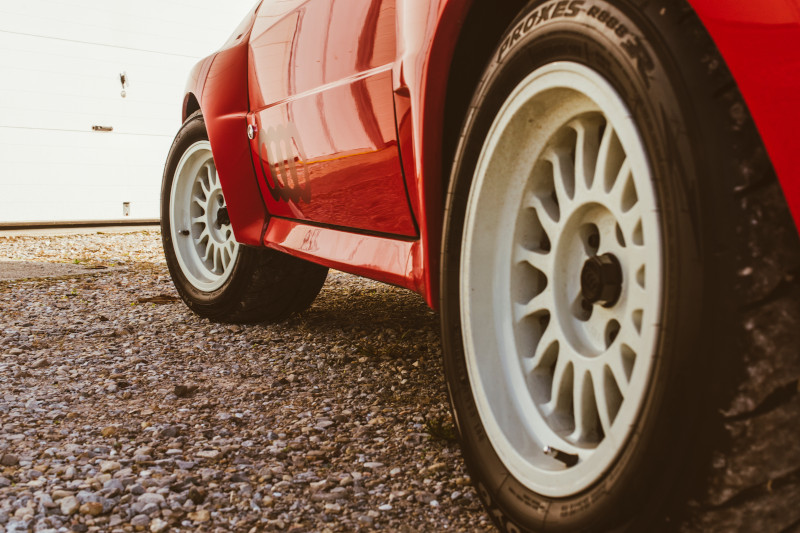
There are plenty of reasons modern wheels and tyres are a different size and profile to their forebears. Cars are physically larger for a start, so there are proportions to worry about. They’re also faster, requiring higher-performance rubber, larger wheels for bigger brakes, and finer tuning of suspension. That’s made easier when the sidewalls aren’t acting as undamped springs. But we miss that sprung effect of taller sidewalls, which can take the edge off small imperfections. They offer greater protection from kerbs too, and potholes, and at a certain profile are intrinsic to the style of the car itself – a 1950s sports car just wouldn’t look right without plump rubber under each arch.
Great visibility
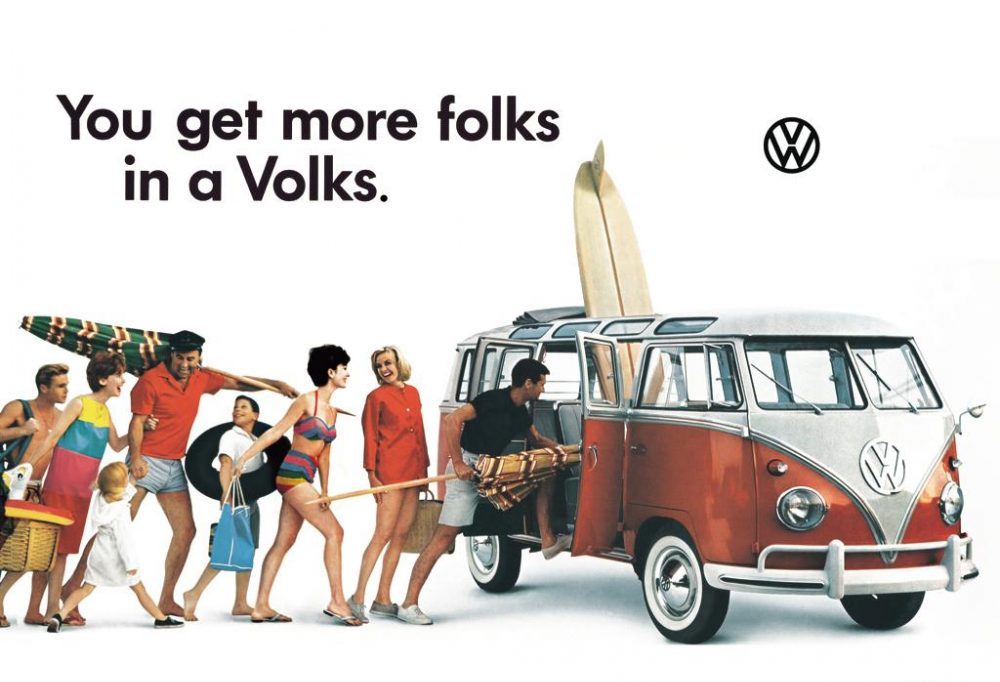
Climb into most cars made even as recently as the 1990s and you’ll be struck by the near-panoramic visibility. Plunging rooflines, higher beltlines and thicker pillars have all chipped away at outward vision, making your kids ill in the back and making you squint around pillars that could hold up the Parthenon. Crash safety plays a part – we don’t need to tell you how thin metal behaves in a rollover – but arguably active safety, avoiding an incident in the first place, has taken a dive, now mitigated by electronics rather than simply good visibility. Those airy old cabins are more personable too – you feel like a part of the world, rather than forging through it in a reinforced bunker.
Turbo lag
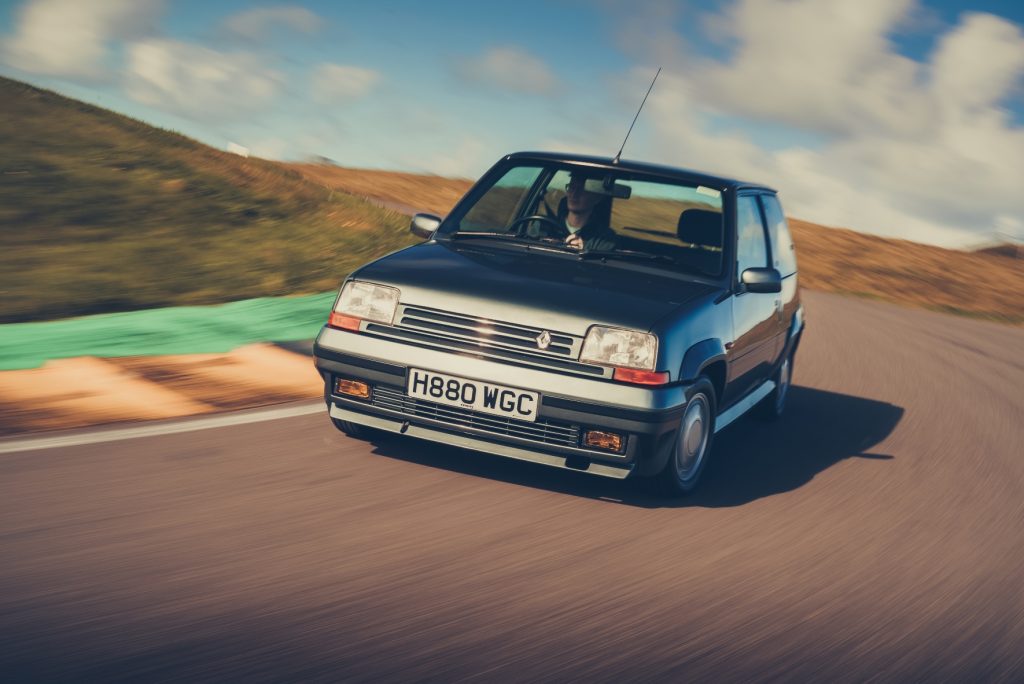
We know what you’re thinking. Enthusiasts are a contrarian bunch, apt to complain about something one minute and then view it with nostalgia the next, and turbo lag is probably among the more contentious items on this list. By and large, a responsive throttle is a good thing. But some cars are rendered more appealing by their imperfections, and turbo lag did make some cars very exciting. You’d snap open the throttle, knowing that just a few moments later (but never exactly when) pressurised air would find its way into the combustion chamber and explode you up the road. Given these engines tended to have distinctive power curves already, it was another element you had to manage as a driver. And if it all came in mid-corner and put you into a ditch, at least you’d have a funny story to tell.
Switches
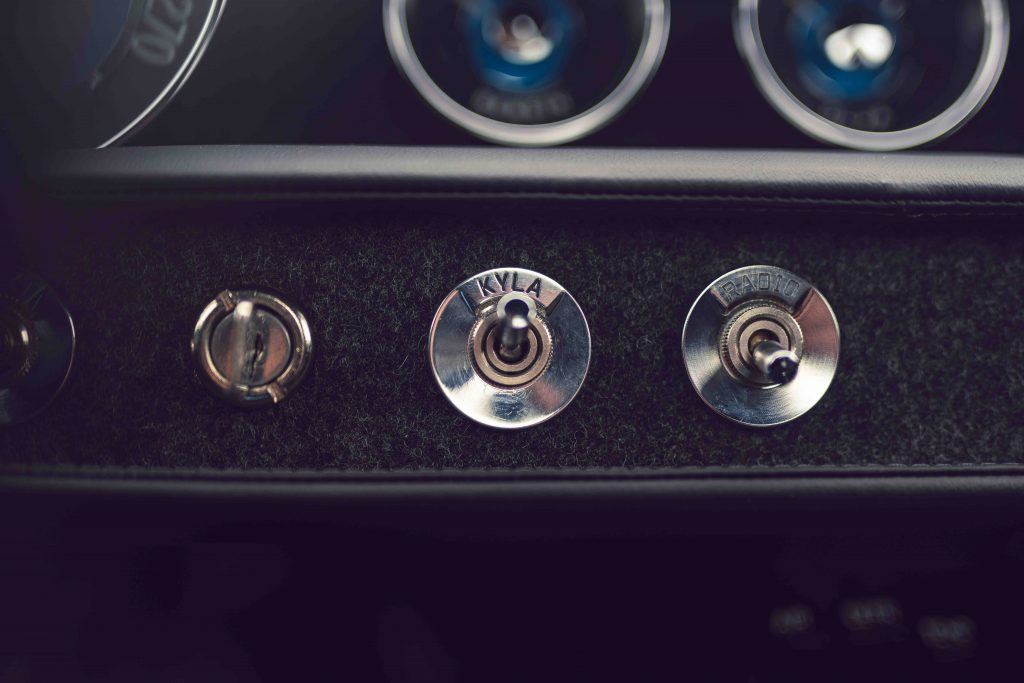
The move towards touchscreens has been like watching a tsunami, physical buttons and switches slowly fading out of view before a wall (occasionally quite literally) of piano black sweeps over the dashboard displacing everything in its wake. In some cars they’re undoubtedly well executed, and in some arguably even aesthetically pleasing – the Honda E’s lounge-like cabin is joyful. But the best still retain physical controls, and in reality we’re pining for the days that switches, knobs and buttons controlled almost everything, and usually without a five-second glance to discover their location. Try setting the fan speed, temperature and air direction without taking your eyes off the road and you’re likely to come a cropper.
Clear instruments
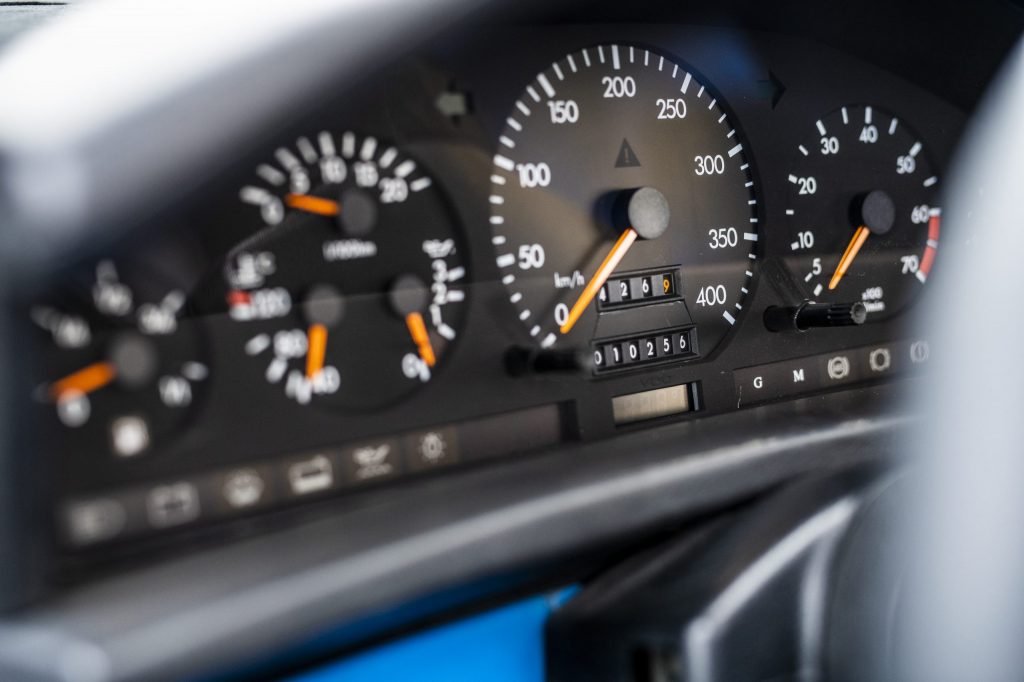
Whatever you think of BMW’s exterior styling right now, there’s a similarly divisive topic inside the cars’ cabins too: the instrument cluster. For decades BMW’s instruments have been some of the best in the industry for clarity – typically white numbers on black backgrounds, large-format speed and engine revs dials, and even a handsome font, backlit for similar legibility at night. Now though you’ll find two roughly hexagonal counter-rotating bar graphs, their needles far from eye-catching, and typically cluttered by other information squeezed between them. There must be a better way to present information digitally – and until we find it, we’d much prefer clear analogue dials.
Fresh air vents

Let’s get one thing straight: air conditioning is great. Being able to set a comfortable temperature doesn’t just make life more pleasant, it makes driving safer too, as you’ll understand if you’ve ever driven in miserable, cloying heat without it – or had to demist windows. But there’s something elementally satisfying about the old-school method of admitting air in old Land Rovers, or Citroën 2CVs, where you simply open a physical vent beneath the windscreen. They were amazingly effective too, the direct draught working in a way that dropping a side window never could. Extra nostalgia points if you can open the whole windscreen, as a split-screen VW bus allowed.
Manual handbrake levers
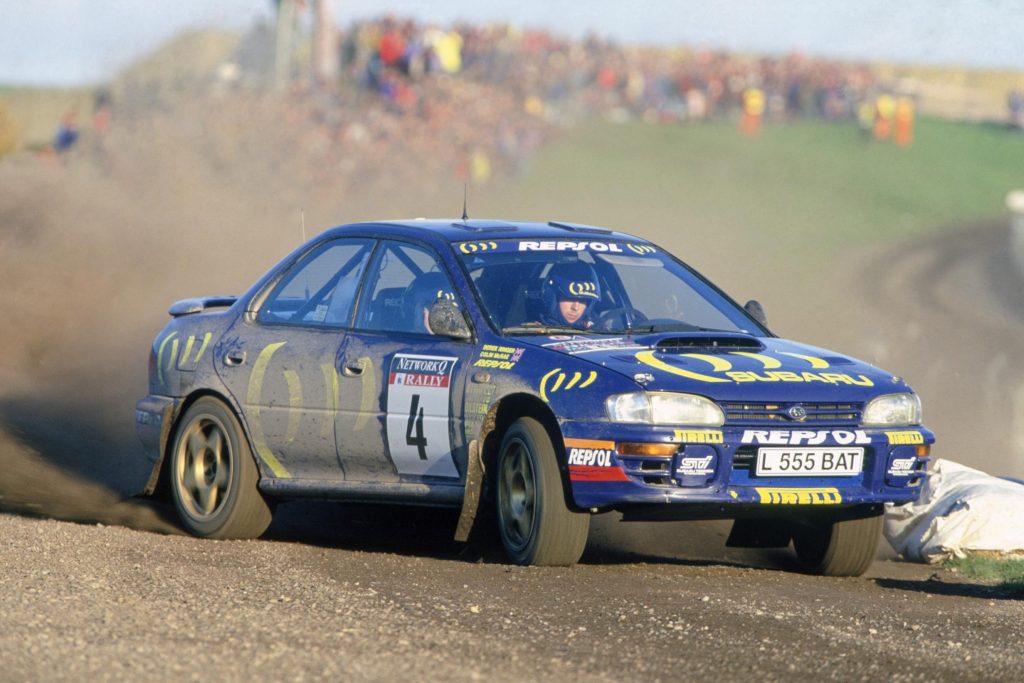
There are still a few bastions of this mechanical operation present in the new car world, but it’s not difficult to imagine a time when they disappear entirely. There are the usual sensible reasons for it – automatic handbrakes self-adjust, the switches take up no space, and they can be rolled in with other electric features such as hill-hold assist. But the traditional handbrake persisted for so long because it actually worked rather well. It’s a simple thing to use (for the most part – Mercedes could be baffling for newcomers), and importantly it’s analogue rather than digital, serving as an effective backup brake in emergencies and making the simple hill-start a wonderfully intuitive process. Or pretending you were Jean Ragnotti on a suitably spacious bit of private land…
Suspension travel
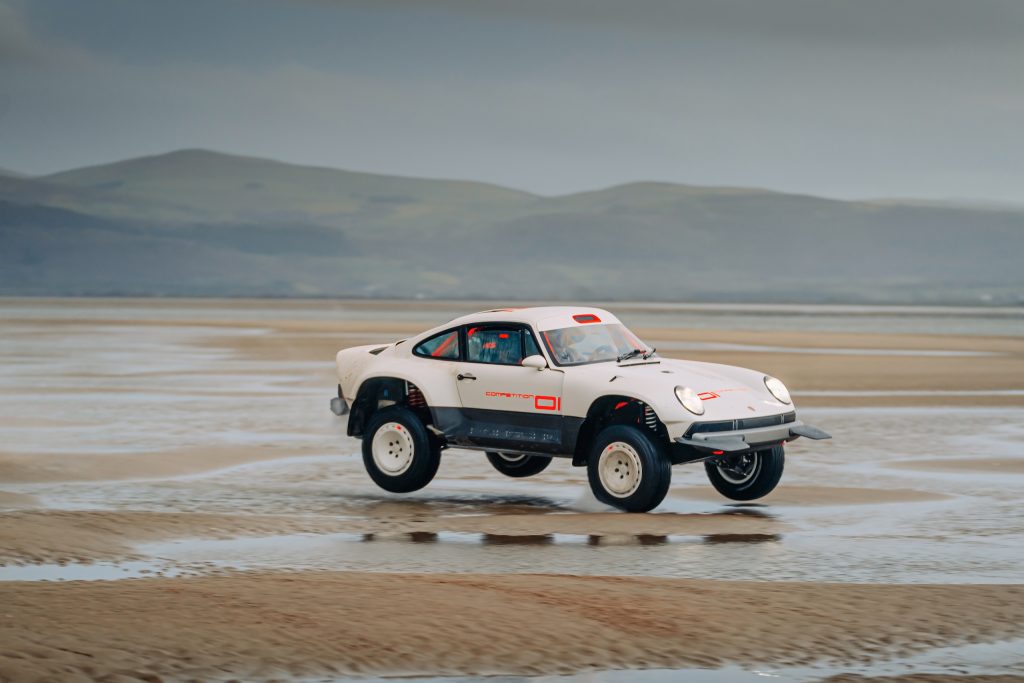
There comes a point in every car enthusiast’s life where the idea of scraping along the ground in something low-slung no longer appeals. Perhaps that’s why the “Safari” 911 craze has taken off. Anyone actually able to afford a 911 is probably old and wise enough to be bored of dodging potholes and clattering their alloys against kerbs. Back in the day though you could get this benefit from almost anything, as cars offered greater ride heights and plenty of suspension travel fresh from the factory, without resorting to the modern trend of enormous SUV-like bodywork and two-ton kerbweights. A small salute instead to the Volvo Cross Country and Audi Allroads of the world for keeping long-travel suspension alive in “normal” cars.
Plush seats
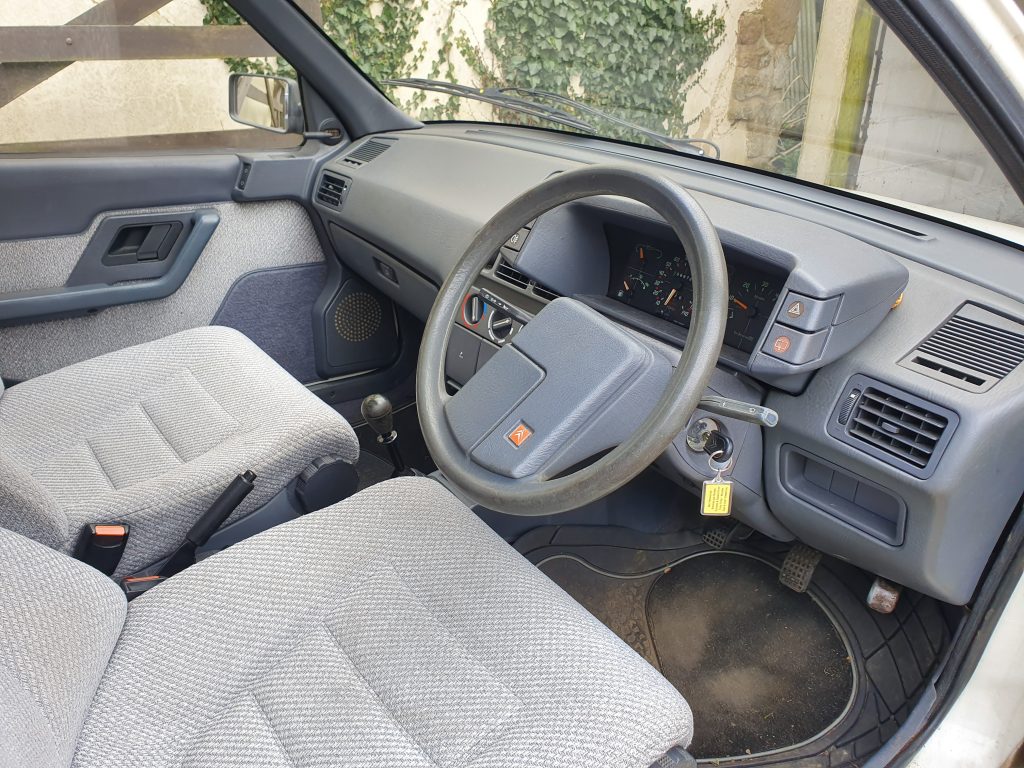
Ever stepped into a Mercedes-Benz S-class and despaired that it’s just not quite comfortable enough? Okay, so we’re not seeing many raised hands, but those of you nodding are probably thinking back to the days of squashy, armchair-like seats in classic Saabs, vintage Americana, and basically anything French built before the turn of the millennium. Modern seats might have a multitude of designers working on optimum adjustment and clever materials, but nothing can really match the comfort of sinking into the thickly padded, mattress-sprung and usually velour-trimmed sofa of something from the 1970s.
Unusual gearshifts
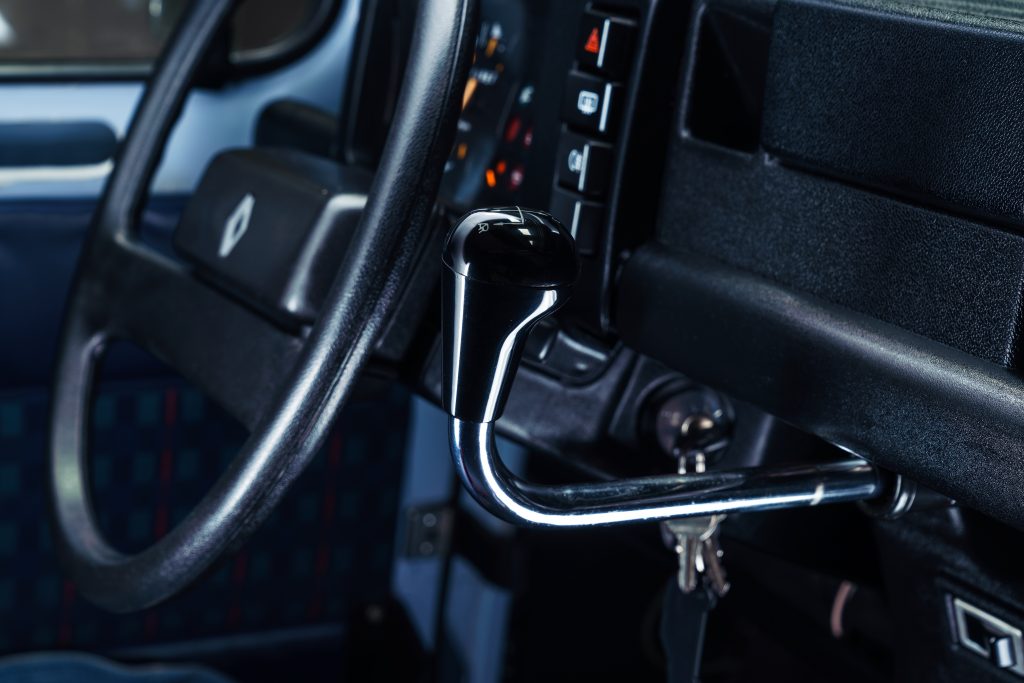
While we applaud any manufacturer still offering manual transmissions, it’s fair to say there’s not a great deal of variety among DIY gearshifts at the moment. You’ll typically get six ratios, and the lever will usually sprout from somewhere between the seats. Older cars definitely have the creative edge here, for while floor-mounted “remote” gearchanges have been around for decades, there were plenty of alternatives too, from column changes (Citroen DS, Saab 96, numerous American cars), through levers sprouting from the dashboard (2CVs and their ilk, early front-engined Renaults), to long wand-like changes approaching you almost horizontally (105-series Alfa Romeos, early Minis). Don’t forget dog-leg changes either, once the preserve of almost any performance car worth its salt.
Spare wheels
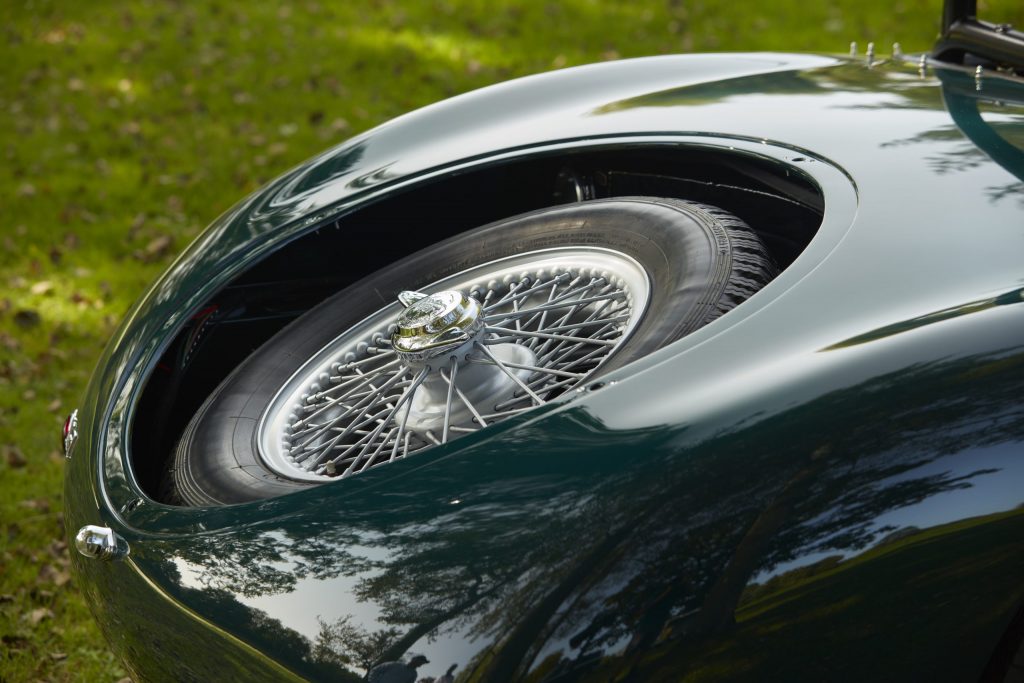
Were spare wheels more relevant in the days that tyre trouble was more frequent? Try telling that to anyone who has lost a tyre and half an alloy to some gaping chasm in a poorly maintained road. A can of goo isn’t much good when all the air has escaped in one dramatic wheeze. Enormous wheels haven’t helped, not just because they’re susceptible to damage but also because it’s harder to squeeze a full-size spare in the boot these days – and as more vehicles stash batteries below the boot floor, spare wheels may not be making a comeback any time soon.
Manual windows
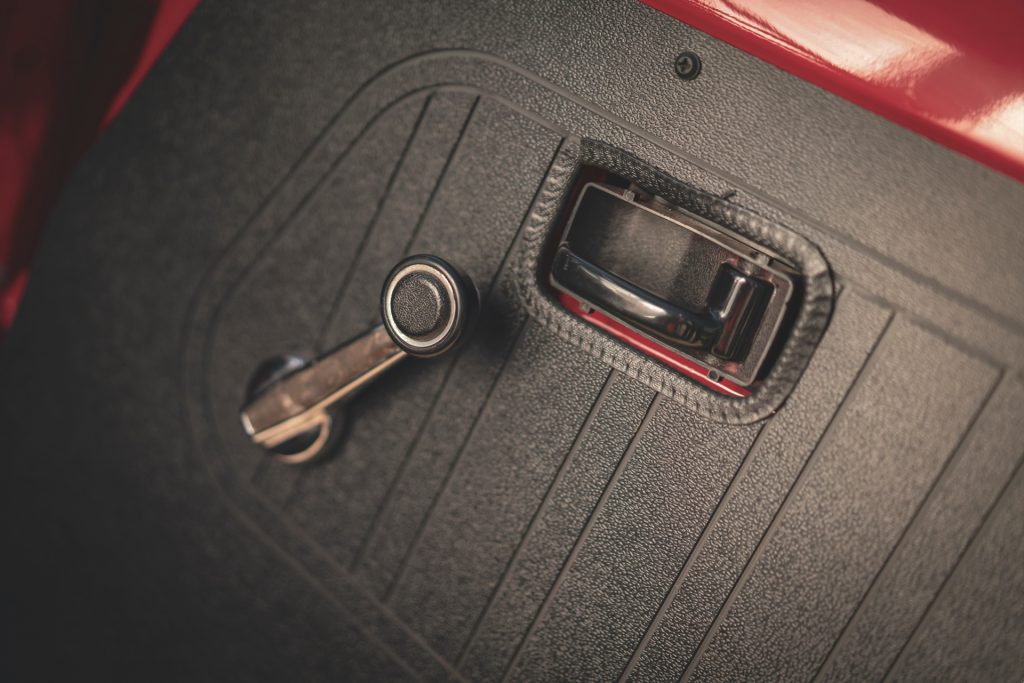
Most of the items on this list can be justified with practical or rational arguments, but manual windows are a harder sell. Reliability? It’s not like electric windows are prone to failure, or hard to fix if they do. Weight? There isn’t a great deal in it – indeed, Lotus now uses ‘leccy ones in the Elise on the basis they’re lighter and more compact. It’s not even like keep-fit windows are cooler, though the slide-back glass on an old Mini or flip-up sections on a 2CV have their charm. Really though, they’re just a device that instantly places cars in a certain era, and that’s good enough for us.
Removable stereo faces
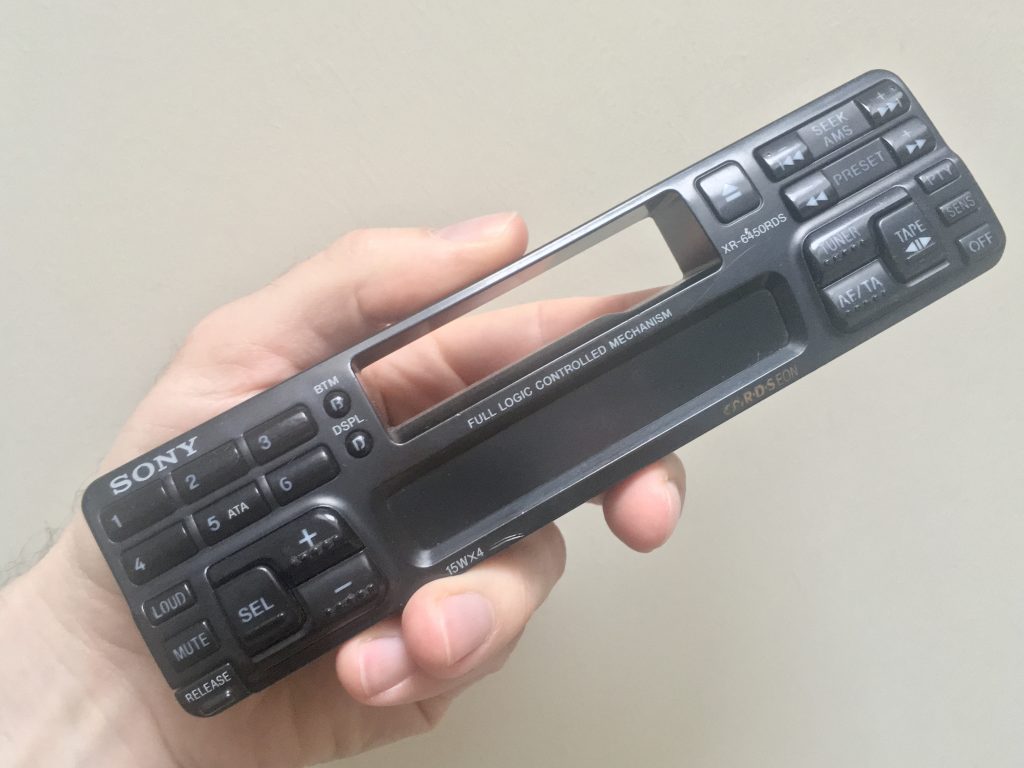
Their styling might suggest otherwise, but it’s not actually possible to remove the touchscreen from a modern car and use it as a budget iPad. In the 80s and 90s though you could flip a switch on your newly-installed Clarion or Blaupunkt and whip the DIN-sized faceplate right off, deterring lowlifes and giving you something to brag about in the wine bar. Very cool, right up until you get half way home to discover you left half your stereo next to your empty spritzer and now need to purchase another at great expense from the local Halfords.
Box arches
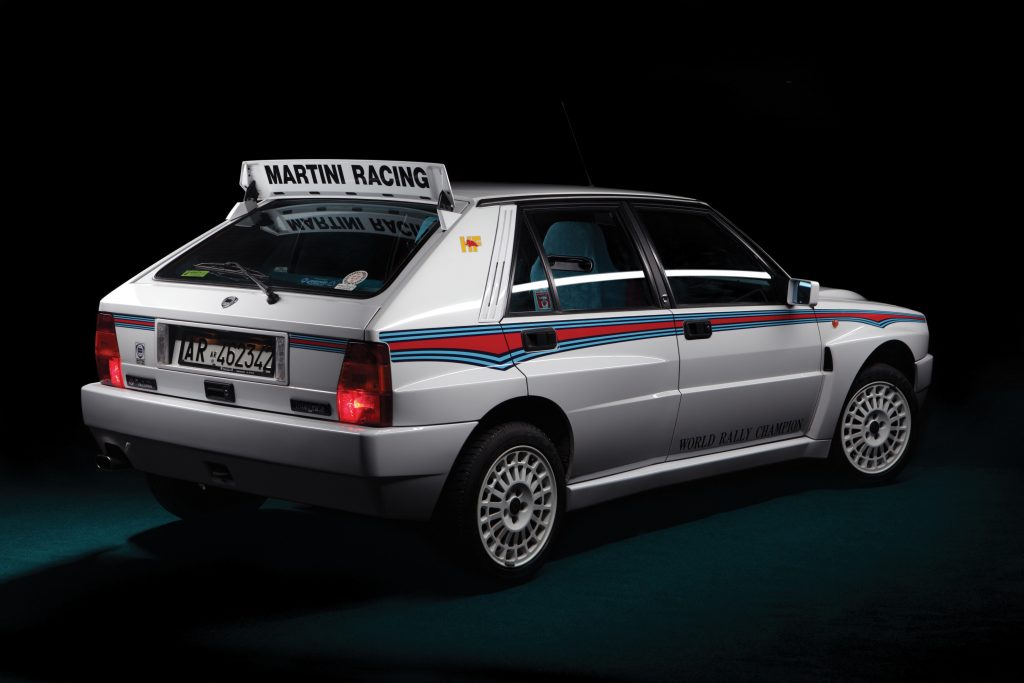
Purely visual, this one, though box arches also speak to the part of us that admires form through function. A few vehicles utilised these blistered arches as nothing more than a styling cue (the Vauxhall Nova springs to mind), but their greater purpose usually belied a wider track on some high-performance derivative of an otherwise mild vehicle. The Lancia Delta Integrale and E30 BMW M3 are probably the best examples, and you could never mistake either for its cooking counterpart. At its most extreme? The Renault 5 Turbo was hard to beat – those arches alone turned it from shopping car to supercar.
Detailed brochures
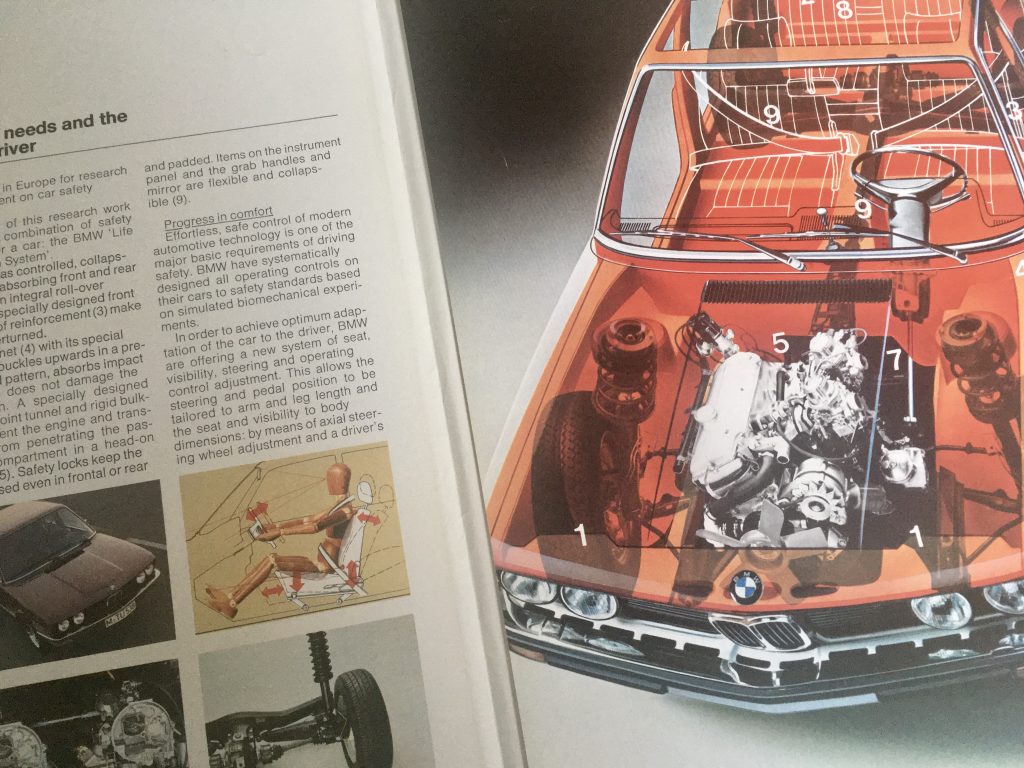
Pick up a car brochure today – if that’s even possible, given many now supply literature only in digital form – and you’ll find page after page of mind-numbing dross about infotainment systems, and how your lifestyle will be improved by the vehicle in question. Old car brochures are glorious things though, whether it’s BMW admitting that its cars aren’t cheap but that’s just a symptom of their quality, Saab spending pages explaining the benefits of turbocharging, or Citroen detailing why its cars ride so well. It’s still just marketing material, but a lot more useful for the consumer than a page full of diamond-cut wheels.
Modest in-car lighting
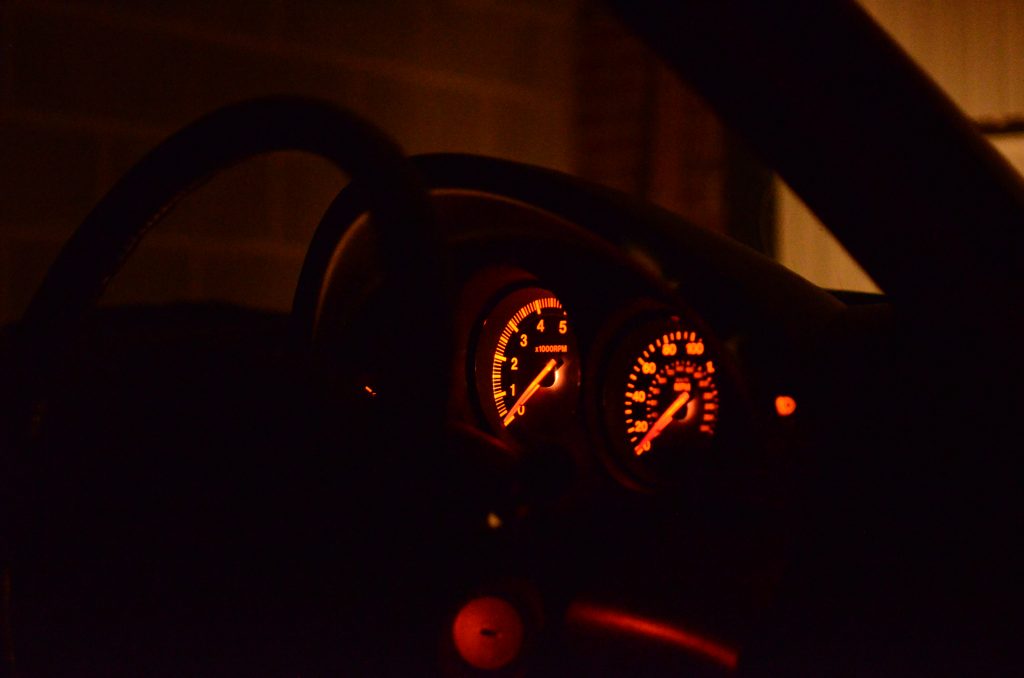
Those of you familiar with the internals of a submarine can probably chime in here, but if movies have taught us anything it’s that red light is most effective for the contrasting needs of darkness and still having necessary illumination. Sitting inches from a flatscreen TV has neither of those benefits, yet that’s how the instruments in many modern cars feel. Drive anything pre-screen during darker hours and you’ll be amazed how little your night vision is compromised by the glow in your periphery. There’s something quite satisfying too about all the illuminated switches matching the colour of your instrument cluster.
Pop-up headlights
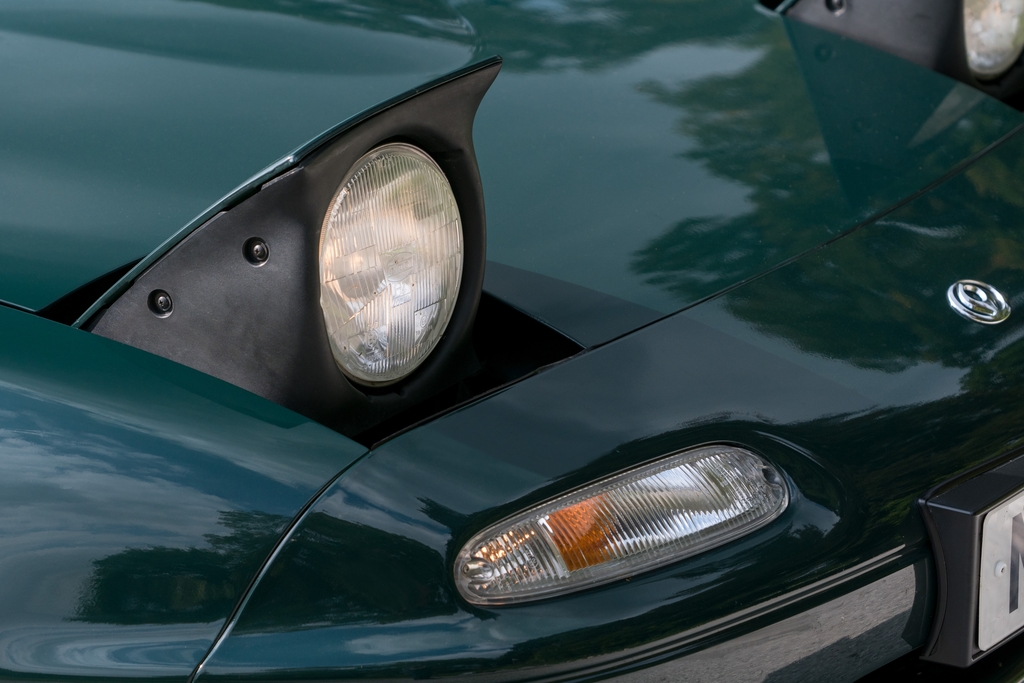
While pedestrian protection is one reason for the disappearance of pop-up headlights, fashion and technology hold more responsibility for their demise. Designed as a way to ensure adequate lighting with low-slung front ends, improved lighting technology eventually made them obsolete. The aesthetic benefits were manifold though, even if you ignore that when raised, many looked rather goofy. Car styling became cleaner, and the numerous ways in which they emerged were always a source of amusement.
Mechanical noises
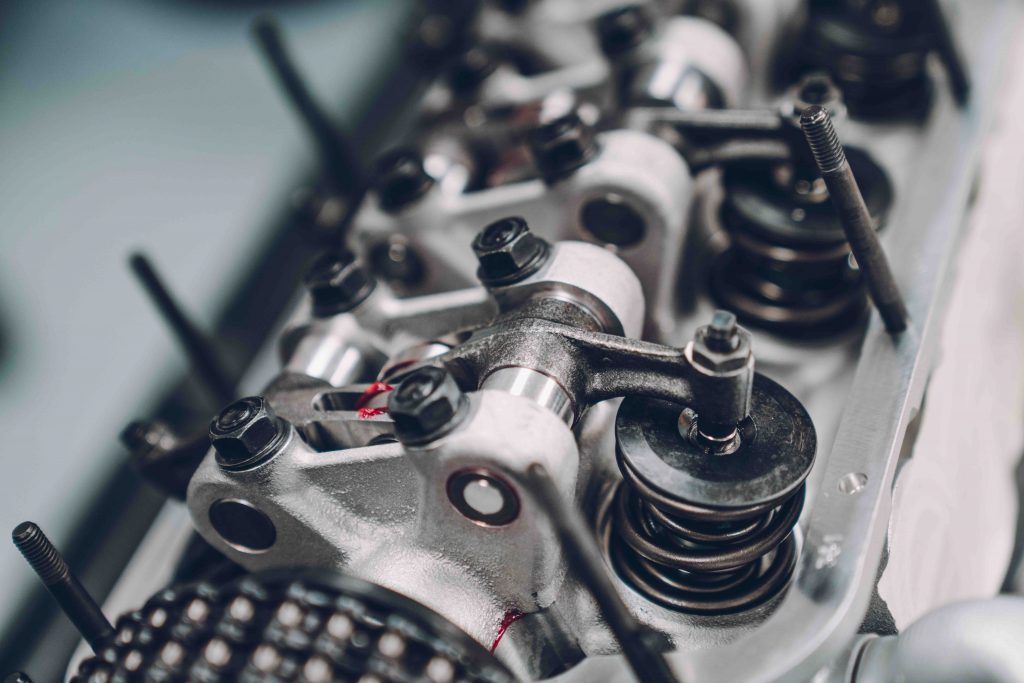
Car manufacturers spend enormous sums making their vehicles as quiet and refined as possible, only to reintroduce sounds digitally to boost their aural character. While it’s nice knowing that you can enjoy a fruity engine note without alerting everyone within a ten-mile radius, there’s still a satisfaction in driving something a little older and hearing those noises first-hand. Not just exhaust roar either, but gear whine, valvetrain chatter and induction snort too. Apart from anything, it was always a subconscious cue to your speed and revs – 60mph felt, and sounded, like 60mph.
Cheerful colours and trim
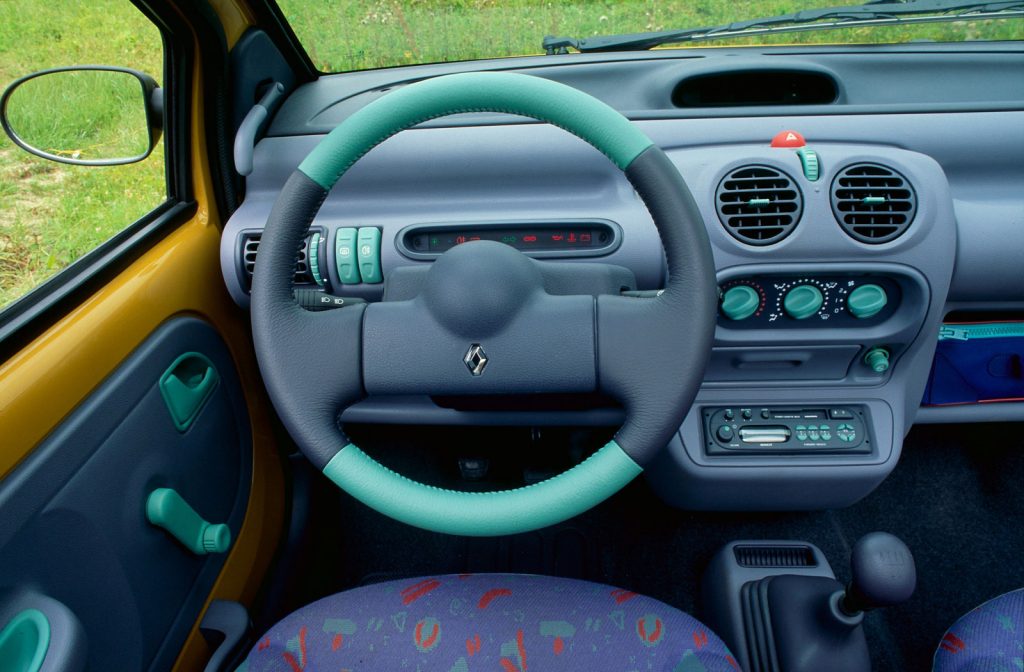
If the car industry has a sense of humour, the 1990s was probably when it told its last joke. Cars of the early 2000s, brilliant though many were, could feel awfully bland after the riot of colours and trims of the 1980s and 1990s. Entry-level Fiat Puntos came with bright blue seats, the Renault Twingo’s interior switchgear was mint green. And if you had the cash, you could colour every last bit of a Porsche 964, inside and out, Rubystone red. That’s to say nothing of the splash graphics and wild trim patterns the era brought us. You’re now pretty much limited to four-figure options from certain German manufacturers, rather than cheerful superminis.
Read more
9 modern classic cars to beat the ULEZ charge
Living in a box: The rise, fall and resurrection of the red telephone box
Take a tour of Britain’s preserved and crumbling local petrol stations


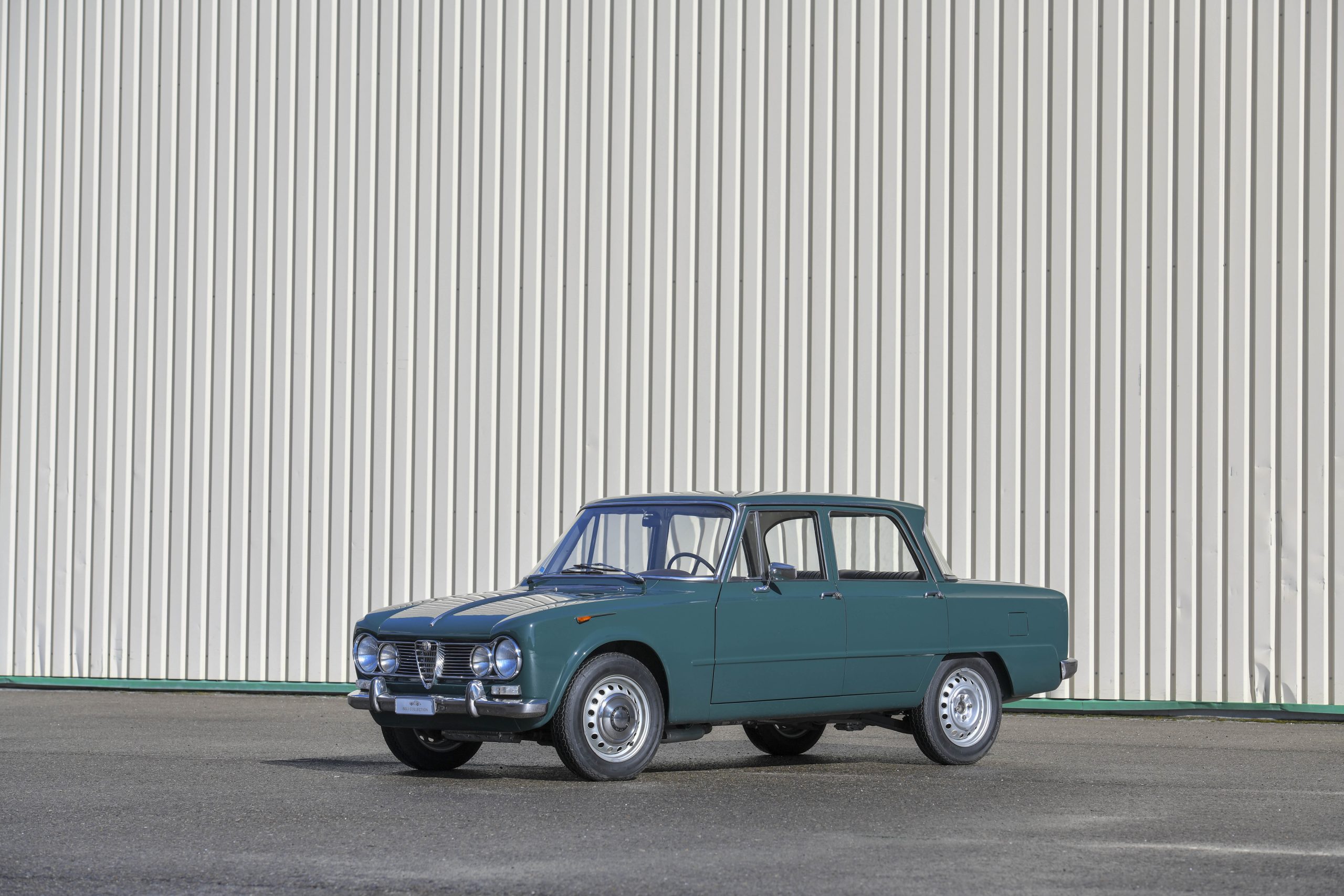






Amen to all the above, but here is another which I miss on ”modern” vehicles, lifting the bonnet and being able to rev the engine by moving the throttle by hand and being close to the engine where you can hear all the components moving. Gone are the days when a true mechanic could listen to an engine and determine a problem…..
Re lack of spare wheels. If you do use the car’s air pump and tyre sealant glue then the tyre cannot be repaired. I new tin of goo at the dealer costs as much as a new tyre as well.
For me, it is the combination of two of the above features that cause frustration with modern cars: low profile tyres and high waistlines make parallel parking a nightmare. No matter how careful I am I cannot judge distance from the kerb, and scuffed alloys are the result.
My pet hate with modern cars is the fact that the indicator stalk (with dip switch) is on the “wrong” side of the steering column. British cars of the 60s, 70s and 80s had the indicators on the right-hand side of the column which made a lot of sense because it meant that you could operate the indicators and dip the headlights at the same time as changing gear. Nowadays you have to make a split-second decision: do I complete the gear change and blind the oncoming driver or abandon the gear change? I suspect that the reason for the change to the wrong side of the steering column might well be due to EU regulations requiring standardisation. I may be wrong, but ………..! My first car, a 1964 850 Mini had the dip switch on the floor to the left of the steering column, so the thing to do at night was to drive with your foot resting on the dip switch. I managed, inadvertently, to change gear a few times using the dip switch by mistake. Happy days!
Agree with you on that James – as a habitual buyer of Japanese cars I know they persisted with the right-hand light stalk well into the 1990s. There are usually a few moments if you’re going from one to the other where you’ll use the indicators instead of the wipers and vice-versa, but being able to multitask in that manner definitely has its uses.
I agree with all the above and the 20 features listed, but I’d say there are a few more e.g.
Why do we have to have air con in everything these days? There’s really no need in the UK, when you can simply open the windows on the odd occasion it’s hot enough!
What’s wrong with manual wind up/down windows and even manual heater controls?
What about manual steering, I can’t think of ‘any’ newer cars that doesn’t have electric power assisted steering?
It seems that the modern day driver has become incredibly lazy, or even dependent on having everything assisted! In some cases, the more high end cars now do a lot of thinking for the driver?
Modern cars are now packed with unnecessary complex electronic systems which also adds considerable weight? Not to mention the environmental impact?
If some cars were kept simple, they’d be considerable cheaper to buy and run, and kinder to the environment too! But then, a lot of industry that is now operating to produce all of these driver assisted products would potentially suffer from a reduction in demand?
However, as a consumer, you should at least have the option to buy a ‘simple’ modern car!
Whilst I’ve had to accept a lot of the modern features in newer cars as time has progressed, I am very fortunate enough to still own a very old school analogue supercar, the very first Ultima GTR, with a race spec SBC, Holley NASCAR spec carb, MSD electronic ignition, but nothing assisted, not even the brakes, so it’s a real work out to drive! Though it beats going to a gym any day. So if I want to wallow in the ‘old times’, I can at least take the GTR for a spin which is a priceless drivers experience!
It’s very clear to me that we are slowly but surely moving toward driverless vehicles that will simply take you from A to B as a passenger! Hopefully, there will still be some affordable classics out there to offer a real driving experience for some time to come, though I doubt it?
Re: David’s comment. It would be nice to lift the bonnet and actually SEE the engine, not just acres of plastic covers. My daughter has a new 911 and you literally cannot see any part of the engine. There are four pipes at the back out of which a lovely noise comes so there must be an engine in there somewhere!
My Ferrari 308 GTB also has four pipes at the back out of which an equally lovely noise comes but, when I open the engine cover, I can see what they’re connected to.
“but arguably active safety, avoiding an incident in the first place, has taken a dive, now mitigated by electronics rather than simply good visibility”
No ‘arguably’ about it, Antony. Modern drivers are too passive, over-reliant on their electronic safety equipment coming to their aid in an emergency. Be it the idiot in a high-powered finance car hooning around 30mph streets at almost twice the limit, or the fool thumbing their ‘phone screen while driving on the motorway, too many liberties are being taken, too often.
The situation isn’t helped by manufacturers cocooning their consumers in snug cabins, lulling them into a false sense of security.
My first car was an ’80s Nissan Micra (K10) automatic, effectively a tin can with an engine strapped to it. Surprisingly spritely off the line, it had brilliant visibility, no power steering and felt positively cavernous inside. Most importantly, when I was doing 25-30mph it felt like I was actually doing 40+mph, so I was always conscious of my speed and surroundings.
It’s the complete opposite today – even a feather-light touch on the accelerator will see you surpass 30mph with ease, and with noise-deadening (plus the aforementioned cocooning) you’ll barely notice it, if at all.
A good job those electronic safety aids are as good as they are – it’s a minor miracle there aren’t far more accidents than there actually are.
The below-the-windscreen fresh air vents of the Series Land-Rovers and early Defenders are, indeed, a great boon in hot weather. But unfortunately your picture of ‘Huey’ (HUE166) is not appropriate. Huey was the first pre-production Land-Rover — the first PRODUCTION one, JUE447, has just been brought back to life by Julian Shoolheifer for owner Jim Ratcliffe — and for the first couple of years the famous vents under the windscreen weren’t fitted. But in the early 50s they appeared, and continued for half a century until (finally) the Defender was fitted with a ‘proper’ heating and ventilation system.
I miss the humble dipstick for a proper visual check on the engine oil level. My MINI has an automatic system that makes this task much more complicated than it needs to be! And don’t get me started on automatic wipers that go into overdrive on a slight drizzle then go into super slow mo in proper rain! Then there’s automatic lights …….. I miss proper switches where a click meant you knew it was on or off. Whilst I really like my MINI, I find changing anything like the heating for example can be a task best done whilst stationary.
Mike, I couldn’t agree more about so-called digital dipsticks. Our household has a modern, 3-cyl Mini Cooper and as you describe, the process is protracted to say the least.
This may be my fave-ever article. Love the walks down memory lane! At once, it was more work intensive but much simpler, too.
To me the most frightening ‘modern improvement’ is automatic headlights. Why is it always the grey cars that come looming out of the daytime fog totally un-lit? You know, the big expensive ones with auto-everything, and not enough driver sense to realise that automatic headlights work on the light level and not visibility. I have a friend to whom I’ve explained it over and over, but he’s so proud of his high-spec car that he can’t begin to comprehend that sometimes the Mk 1 Human Brain does a better job.
Choke levers!
The unusual gearlevers should have been visualised by the primarely French umbrella handle type 😉
A visible and fully functional exhaust. Instead of a “chrome” piece of plastic at the rear end of a car.
I miss the comprehensive instrumentation of older cars, I liked knowing I had good oil pressure, engine temperature and battery charge. Plus nothing better than facing a walnut dashboard with an array of black on white Smith’s instruments with dials moving as you drive. That’s why I would love a vintage car.
Plain rearlights!
I remember Fiat Uno to have moved the rear lights into the wide hatch. In the meantime have even the cheapest cars got elaborate rearligths growing up the C-column and crossing the gap between body and rear hatch – All just to satisfy the designers.
And now sets LED’s in with regular light-shows which nobody would have been aloud to make privately a decade ago 😐
One thing I miss is opening sunroofs. When parking the car on a warm day you could leave it ajar, so the car didn’t get as hot as it would have done. If on the move – especially on a long journey – it would help the airflow through the car. Many modern cars have glass roof panels – but they are fixed, and don’t open, which seems a bit pointless.
Whether you like it or not… If everyone made it a point not to buy into driver aids our cars would be very different.
Car companies push towards certain demographics, but would be discouraged if sales dropped.
Not that long ago we had an abundance of small low drag, simple light cars… now (somehow in the name of the environment) we have large family suv’s clogging up the world and the environment with their dpf purges and more equipment than a bond villain.
Yet we lap up the spiel and the consumer advice like we don’t have a brain and follow the consumer lemmings.
So what’s better for the environment a car bought every 20 years and maintained or or 10 new cars bought over 20 years and maintained?
A lot of habits need to be changed
Metal or glass sun roof! Just dont see them anymore, I had Capri and a Sierra, loved opening the roof up.
Quarter lights! Being able to open a small flap window for fresh air with minimal wind noise. Perfect!
…. great to see someone is as old as me ! … and along with all that came traffic light racing, repairing your car when it broke down at the side of the road, car clubs meeting in pubs, and great car movies
Why do the interior lights, switches and instrumentation have to be permanently lit? It makes drivers think that they’ve turned their lights on when they haven’t. No wonder so many people drive round in the dark with no lights on.
Thing I hate most on a modern car is that infuriating stop/start feature. I can turn it off by pressing a switch on the dashboard but that brings on a warning light on the instrument panel which is a distraction. Turning off the engine cancels the function, meaning the switch has to be pressed at the beginning of every journey. The stop/start operates at the most inconvenient time, usually when maneuvering into a parking space. The engine usually restarts just as you are ready to switch off and park up. Imagine waiting for a gap in the traffic: there it is, hit the go pedal, then realise, too late, the engine had cut out while you were waiting and it now restarts and the anticipated quick getaway instead becomes a sluggish, labourious issue fraught with danger. Apparently my car cannot have this feature programmed out, so I’m stuck with a feature that simply saves no fuel because the engine never cuts out long enough and I’ve no doubt that on the extremely rare occasion it cuts out for a minute, it must surely use more fuel getting back up to temperature. I’d guess in the space of a year, total running time saved is about five minutes. I wonder how much damage is done to the battery and starter motor leading to premature failure. Imagine the additional drain on natural resources and industrial pollution as a result of manufacturing all those spare parts. Different story of course if a person drives regularly in congested areas. Simple answer is for manufacturers to anticipate greater range of driving conditions and offer the choice of having the feature programmed out upon request by the dealer.
love the way older cars had their front indicators separate from the other front lights this modern design habit of combining indicators with the headlight /side light cluster do not make for clear signals particularly when they use clear lenses, and what is it with drivers relying on day running lights at night apparently unaware they are unlit at the back
What was wrong with having the horn button on the end of the indicator stalk or on the middle of the steering wheel? My Vauxhall has two buttons on the steering wheel spokes so they go round when the wheel is turned. I have never found one yet without looking down away from the road ahead!
I once drove a BMW 1 series with stop/start, they didn’t warn me about the feature so obviously, when it turned itself off I assumed at first that it had either stalled / ran out of fuel or the engine had seized, scared the crap out of me, and what’s the idea with mirrors that automatically point at the kerb by the front door when you select reverse? bloody near took out the wall on my driveway thanks to that little gem.
One of the main reasons for all this “ stuff” on cars is that gimmicks sell cars ! People are so gullable that they fall for it ! Most of these things are so cheap to manufacture and install . My son is a classic , if it’s got a red LED on it he will buy it ! Doesn’t matter what it is ! I know someone who bought a Merc with paddle shift , she was so proud of this when she bought it . 6 months later I asked her how she got on with the paddle shift ! Reply ,, “ never use it , don’t understand it “. Just about sums gimmicks up ! Also I don’t think electrics are developed enough yet to be 100% reliable . I do work for a garage and probably 80% of the cars that come in have electrical probs ! Sorry ! I don’t do gimmicks !! Gimmicks wouldn’t make me buy a car !
Was impressed with my ’56 Rover 90, with the press of a dash button the fuel gage displayed the oil sump level
I was JUST thinking about this an hour ago! My wife has a new Citroen C3 Aircross and I absolutely HATE that EVERYTHING is on the damn touchscreen. 2 menus and 10 seconds of eyes off the road to adjust the heat/AC fan? REALLY? (Tesla is in hot water in Germany because their wipers are controlled this way…)
Today I told her that I think the car needs servicing. It was making a beeping noise, um, musical tone…. and showing me what looked like a clock. Well, the music remains a mystery, but the clock was really a speedo and it was telling me that the cruise control was on!
You shouldn’t have to read an owner’s manual every time you want to drive someone else’s car! (or rent one!)
Buuut wait, there’s more! When our bike rack is on the trailer hitch, and wires plugged in, the “smart” car turns off the rear camera along with the radar. Now, I appreciate not having a constant beep because of the “trailer” but the camera would be even MORE useful with one.
Gimme back my MX-5 NB thank you very much!
And if you have the GPS on through your phone, everything is buried under another layer or 2 of menus!!!!!
Luckily I do not have a modern car…..for all of the above reasons!!! Daily driver at present is a 92′ 320CE….which is even too modern as it is. Give me simple and basic any day of the week….and guess what? It may take longer getting there but the journey is as much fun as the destination!
My company car has just about all the modern attributes. After 3 weeks I still only understand about 6 of what I consider the unnecessary electronics. And in addition to the speedometer console being filled with “information” the physical rocker-type switches take up five rows on two different console sections. And its not exactly Lexus class. My own 1999 Rover 75 has everything I need, including a lovely muted red lit dashboard at night.
Manufacturers please leave a dipstick to check the oil level . Please ensure that all bottles holding brake fluids and water levels is clear and can see the level easily . I miss the water temperature guage , oil temp gauge of older cars . Always have switches for wipers and air conditioning and not put on the screens as they are a danger to use with your eyes too long away from the road .
Indeed! Thanks !
Always liked SAAB’s ‘Black Panel’, a button which would kill all but essential dash illumination, leaving just the speedo IIRC. If water temp went high or fuel low the dials would light up.
Love reading all of these and agree with all. I moved to Spain 6 years ago I thought i would splash out on a more modern car with the aim of keeping it a long time bought a Seat Altea fr. It suffered constant dpf problems. The final straw was the cam belt tensioner failed, i dont need to say more. I then thought ok I’ll buy a basic modernish car Peugoet 308sw petrol, water pump failed common problem evidently. Emmisions control light kept coming on, the Peugoet dealer said it needed a full engine rebuild but wouldn’t guarantee it would cure the fault. I now have a 20 year old Volvo s60 have covered over 50,000kms since i bought it with out a single problem and i can do the servicing myself. Keep your modern cars.
We have a 74 Land Rover Lightweight V8, and a 63 Rambler Ambassador 990, and a 1990 Pug 205.
Even the Pug has annoying bits of moderness in terms of servicing and repair, but no silly driver aids.
None of them has PAS. The only car we’ve ever owned with PAS in 52 years of driving was a Silver Shadow with that 60s fingertip lightness, we had that for two years and it was lovely, like wafting around in a library, but the complexity and the rust killed it.
I have driven modern cars on holiday, I admired the washer pump of the little Fiat we hired in Gomera, but the thick pillars were a positive menace on the twisty roads.
And why are cars so fat? Our TR6 was 4’10” wide, but had plenty of interior space.
I shall never ever buy a modern car. Modern cars are for dummies.
I miss horn rings, and horns which sounded like proper horn – two note wind tones à lá Humber Super Snipe for example
Thanks Heaven I’ve still have a classic in my garage …
Still got the pop up headlights on my Toyota MR 2 and working well !
This article and comments are priceless, a great read too!
I love the heated front screens in my Jag and Range Rover and, the side mirrors that dip to show the kerb when reversing I love to bits. The heated steering wheel in my Jag is fantastic on chilly mornings and with the heated screen, wing mirrors, back screen and seats, how could anyone live without these as a minimum 😂🤣😂🤣
I do remember years and years ago that my eldest brother had a ‘Isetta Bubble Car’ and, a ‘3 wheel Bond Mini’ which used to have starting handles to fire the engines up or, a motorbike engine that he used to have to kick start, after he had opened the bonnet and got his leg inside eeeeeeee wen I were a lad 😁😂🤣
I do miss the switches and dashboard from my previous XKR but, write your car off and replacements are not always comparably well looked after.
The 350Z convertible has awful all round visibility from the cockpit unless the roof is down then, visibility is amazingly brilliant!
One aspect of all this that troubles me a little is that I have an eighteen-year-old currently taking driving lessons, and looking blankly at my hand-brake lever. So I patiently explain to him how life is in a car that needs the occasional MOT check, and tell him that his first (several) cars are going to be a terrible let-down after the brand-new-ish marvel he’s learning in.
Ideally all driving lessons would have to be done in a fifteen-year-old Daewoo Matiz just so real life doesn’t come as such a shock.
I’m in much the same boat, Tim! Did you see this piece, by the way? https://www.hagerty.co.uk/articles/community/start-them-old-learning-to-drive-in-classic-cars/
Things I miss:
– Spare wheels
– Manual handbrakes.
– switches rather than touchscreens
– DIY repairs
Things I don’t miss:
– lousy lights
– terrible brakes and handling
– woeful economy
– Rust!!!!
Great article and great comments! For me: horn rings, floor-mounted dip-switches (brilliant!), quarter lights, mechanical or hydraulic steering, roadholding limits you could approach and physically feel, analogue everything. But above all … subtle and genuine good looks. Nearly all modern daylies are ugly muscle packs, over-styled sport hatches or deliberately retro nostalgic and phoney. Only a few top-end cars are truly stunning. Thank God for the MX5.
I drive a thirty year-old Caterham and a thirty-two year old Bentley Turbo R to give me the absolute best of both worlds.
Bring back rain gutters on the roof. You could open a window and get a gallon a water coming in. Was also useful for fitting a universal roof rack without the need for expensive and weak roof bars. 👍
Oops. I mean not get a gallon of water coming in…
Quarterlights, starting handle, ash trays.
Miss plastic bodywork buffers along the sides of cars to protect against needless paintwork ‘dings’, dents & scratches. Modern side-panels are so often sculptured to be eye-catching works of art rather than practicality ! And what about returning to robust, separate front & rear bumpers which if damaged, won’t require paint resprays or a replacement of a complete front panel ?!
I remember the days before push button start/stop for the engines became so common that one of the big joke memes on Facebook was a picture of the screen of a PC highlighting the start button with the tag line “imagine if Microsoft ever designed cars”
Hi Pete, my 2002 Citroen C5 had a similar idea with a button that killed all the lights on the dash, including the stereo, other than the speedo and it was a godsend when doing a lot of nighttime driving …. It’s something I seriously miss on my 2007 Skoda Octavia which replaced as its lit up like a Christmas tree in the dark
My 1st car a 1975 Renault 16TL nicknamed “The Hatchback from Notre Dam
Had a column gear change & the most comfortable seats I have ever sat in.
How about the Starting handle for those cold mornings when the battery was flat – or when timing the engine? Lucky enough to have two cars – one modern(ish) but basic and the other an oldie, no power steering, servo brakes, seat belts, crumple zones, air bags, aircon, electronics – and which gets used most and is barrels of fun…you can guess!
The indicator stalk being on the wrong side is a constant bug-bear to me. It’s ONE of the reasons people can’t be arsed to indicate ( the other being ignorance/arrogance ). In a right hand drive car, you can indicate, change gear and steer all at the same time if the stalk is on the right of the steering wheel. I also get annoyed with my modern MG as the stalk cancels no matter which way the wheel is initialled turned, often requiring a second stab at it, and it’s on the wrong side !
I had an ABCD floor layout too. (Accelerator, Brake, Clutch, Dip pedals) Really useful on winding roads at night. Also agree about French seats – I still like them – though I wasn’t so sure about the handbag carrier gear shift of the Renault 4 !
I miss the foot operated headlight dipswitch. Utterly logical and easy to use. Agree with comments re indicator stalks which should be on the right in a rhd car. And there was true merit in a quick drop window winder so that you could do hand signals easily…. OK. Back in my box time…
Lack of switch for rapid demist. Positively dangerous if you have to find it in software. But cheaper for the MANUFACTURER.
I’m still driving a car with at least half or the things mentioned on your list – I drive a 1999 Renault Clio and love it every time I get in it and just drive. I’ve owned it for the last 16 years – yes it’s had a few modifications but still has that Retro driving feeling.
In response to David Finlay and his comment about lifting the bonnet and manually “revving” the engine, I miss actually finding the engine under the bonnet! There are so many wires, hoses and “shields” surrounding engines these days for all the “auxiliary” systems (power steering, aircon etc etc) that the engine is dwarfed by everything else that is crammed in!!!
Modern cars might give better mpg. But what’s with all the plastic. If they didn’t put so much plastic everywhere the cars would be lighter. And even more fuel efficient. I miss lifting the bonnet and seeing the parts you need to check. And even having a dip stick to check your oil. Without pressing buttons to get a digital readout
I thought the article would cover features from old cars such as manual chokes or starting handles. Doesn’t seem to go back that far
Manual gearbox. Crash of course, requiring double declutching. No synchromesh.
If you drive properly it does not matter where the indicator stalk is. Can My Safety Be Given Away? Course, Mirror, Signal, Brake, Gear, Acceleration. It’s a sequence not a panic reaction to a hazard. On the subject of auto headlamps, the switch has to be in the correct position to work. If that concept defeats drivers they should perhaps hand in their licence
I fear that car front lighting is getting so bright that it is dangerous. You now frequently are confronted by 6 lights being used on most cars, and driving in the wet becomes a dazzling nightmare. Too much light can easily become a killer.
One such night I nearly drove into the back of an unlit parked car, driving with dipped lights. The barrage of light from oncoming traffic had impaired my vision to such an extent that I simply didn’t see that car until it was nearly too late. Modern cars now have so many very bright lights it is like driving towards a Christmas fare..
Now I have resolved that in similar circumstances I will use main beams regardless.
Give me cigarette lighter, an ashtray a hand brake on the driver right hand side, column shift and a front bench seat with no inertia reel seatbelt. Traficator indicators, wipers on my head lamps, a reclining and extending Ariel. Door pockets that literally were pockets, just wide enough for a map book. Pump it out yourself washer fluid for the windshield. Zebra zone safety glass. Positive earth electrical system to help stop rust forming. Tilt or slide sunroof or one that’s just removable.
Saw a new Fiat 500 the other day alongside a Sierra. The fiat looked like a big fat American next to a 90s supermodel.
You have missed out the words POWER. Most new vehicles now won’t pull the skin off a rice pudding. On top of that there is no fag lighter or ashtray. The manual handbrake refered to was actually the three point turn lever, those days are gone. What has the world become? All of the good cars of the eighties are no more.XR3I, ASTRA GTE, the list was endless. Can’t think of an affordable british performance model now, they are all German. And who was the biggest anti emmisions person, yes it was Angela Merkel. One complete hypocrite.
I miss long wave analogue radios. Large sections of m74 and m6 get no signal on DaB or FM, anywhere north of Loch Lomond too. You could always count on LW. Also in car physical media players. For same reason. Spotify is great when you’ve got a data signal…
I would like to see the return of bench seats as the modern bucket stye hurt my legs on long journeys. I get out of the car and it takes me 15 minutes before i can walk.
I prefer cam chains to cam belts in engines. They might make more mechanical noise but they seem to be less prone to problems than cam belts and require changing less frequently.
Quarter lights – the small triangular windows that used to be in the front windows of cars. The ones that could be turned around and would force a refreshing wind into the cabin on a hot day.
Narrow ‘A’ pillars. No blind spots or things hidden behind chunky ‘A’ pillars.
Another vote for manual window winders. It takes hardly and effort and are less complex than all the switches and motors for electric windows.
You appear to have missed one more – the choke!
We all have to pull the choke first thing in the morning!
Ahh! Nostalgia ain’t what it used to be! 🤣
All is not lost! After driving cars with irritating and unnecessary “improvements” for years, my current car impressed me with: great all round vision, proper handbrake, clear instruments, traditional fuel and temperature gauges, a real ignition key, a spare wheel (albeit a skinny one). It has a bunch of “mod cons” too, but none that are stupidly over complicated. Late mk2 Skoda Superb estate. I just hope the later models haven’t fallen in with the crowd…
I can’t stand electric windows. I’ve always had a car without them and when driving other cars that do, I think it’s mental that when I’m parked waiting for someone (for example) I need to switch on the ignition just to open a window.
I’ve also got a 2015 citroen c4 which is mostly ridiculous, but one of the reasons I chose it was that I can turn off the screen on the dashboard so I can actually see where I’m going at night.
Many years ago I had a really old BMW brochure with cutaway views of the engines, it was fantastic, since then these manufacturers seem to be desperate to hide the fact that these things are machines!
I’m completely rebuilding my 205 so I don’t have to buy something newer and worse.
Fantastic comments on this subject obviously struck a chord. I have a 4 year BMW 3 series its great but soul less its non heated leather seats are like sitting in the snow for the 1st 10 minutes! On cold morning s Bring back velour please. Also in a 70s Ford brochure i own their are 26 colours to choose from. I think now a new BMW as a choice of 8. I’m currently in the market for a classic car, garage waiting, prices just too high for me at present though
The concofiny noise due to Lack of a switch to turn off the alarm when travelling by ferry.
No need of an alarm on a vintage car as most modern people don’t have a clue on how to start let alone drive one.
Great article and comments. My MGA has the horn button in the middle of the dashboard, not easy to find when needed and by the time it is, the need for a warning has gone. However when I get it right the two tones, an option from new, give a very satisfying blast!
Had an interesting time explaining to the MOT “mechanic” how to operate the fly-off handbrake!
What’s happened to all the flies that died on the windscreen ? Screen at a shallower angle ?
Anyone rember the fly diverter at the front on the bonnet ; see through plastic
Modern cars are at least 25% heavier than an equivalent offering of 30 years ago. A medium sized family car should not be over 1000Kg. Time cars went on a diet.
my 1960 Ford Prefect 107E gives me all the simple things i need just a shame i have to drive my Skoda Yeti most days i agree with all the comments to many driver aids when something gos wrong it’s at fast speed and no chance to correct the problem and end up in a ditch
I had a 1969 Porsche 911 with indicator/wiper controls on right(!) side and heater controls backlit to show settings in an instant. Pet hate for years now is that “Construction and Use” regulations used to specify light/indicator locations with reference to them being visible as the vehicle was approached. Now you have front sidelights near the windscreen base. or so far in from the vehicle’s edge as to be useless!It’s nice to tell if a car in a side-junction is going to turn left or right! Can’t knock aftermarket LED lights though-ace! Our current Mazda 6 estate 2010 is a great car-m.p.g. is outstanding (diesel) and although almost the base trim, has so many design features to help a driver that it’ll be awful choosing a replacement…..eventually.
I miss quarter lights windows that opened, manual choke control and simple to maintain cars with none of todays electronic claptrap. Bring back some excitement into car driving instead of the boring cars of today.
I had a Citroen Xantia. Not a bad car but the electrics were awful.
The indicators and electric windows were on the same circuit.
The indicators stopped working, so I decided to use Hand Signals.
(Remember those?)
But the windows refused to operate.
A difficult journey resulted.
This would probably not bother the majority of present drivers, as they either do not indicate at all or just let you know what they have just done.
Love the all-round visibility and exhaust note of my MGMaestro, don’t want a spaceship modern car.
I could fix anything on my old Morris Minor. So simple and was fun to drive.
I cannot stand modern cars at all,there bland boring euro boxes packed with useless gimmickry that packs up & gives trouble in 10-20 years without fail.
This why I love my 1995 Audi S2 coupe which retains everything that we’re missing here-:
Low light glow red gauges.
Pod of rally gauges from factory- oil temp,oil pressure,battery voltage.
Five speed manual floor gear stick.
Glass that I can see out with factory tint green.
Epsiliod headlamps with bumper fogs.
A straight through stainless de cated zero boxed exhaust that would wake Lucifer in hell from his bed!!
Normal stalks for indicators,head lights & horns & lovely manual dials for heater controls!
For Adventure take oldskool car with no electricity to help you out..👌🏻😏
Pure,raw & unadulterated by silly gizmos.
New modern car??? I’d sooner walk or catch a taxi.
My 1998 Mini Cooper Sportspack in BRG with white roof and 22700 miles and 13″ Yokohama tyres covers all of the above. No choke as it has fuel injection. Great fun to own and drive
Wow! After reading the things we miss in cars today, I really feel old. I guess this was geared towards much younger people than people my age. I am 68, and I remember when cars had styling that set them apart from one another. Today they all look like used bars of soap. There’s more to a car’s design than just aerodynamics. Today’s cars are all so boring. They all look the same, their all the same colors both inside and out. And what about ashtrays! There’s barely any room inside to relax and be comfortable (I think that’s partly why drive-in movies disappeared). I love the sound of a V8 engine with throaty duel exhaust, and for that matter, the sound of the Chrysler starters cranking away, and let’s not forget the beautiful Chrysler Corporation dashboards from the late 50s and 60s. The 61,and 62 Chrysler Astrodome with Panelesent blue light backlighting. They were gorgeous. I also miss cars with model names, not just letters and numbers. For the love of Pete! And now we have autonomous cars. I hope I’m dead before all cars drive themselves. I love cars, especially American cars, and I never want that to change. I could go on about what I miss in today’s cars, but I’ll just make myself sick. One last thing, I don’t want a car with sound effects from some recording.
I learned the rule of 9’s for setting tappets in the early 70’s. Cars with control boxes and dynamos instead of alternators many manufacturers charged extra for a heater. Air intakes had summer/winter settings in some cases cooling systems needed to have a different thermostat. Who remembers the decoke removing carbon build up off engine cylinder heads and valves, reseating valves. Changing plugs and points. Not all of us could afford to pay huge garage bills now they charge up to a £100 to find a list of possible expensive parts.
Amen to all that, but what about floor mounted dip switches?
The smell of Wood and Leather in a new Jaguar was wonderful!
Most of the comments here, along with the article itself, are light-hearted, but there are a couple of serious safety matters here:
Most drivers today would be mystified by the idea that you might ever want to use your left hand to “change gear” while on the move, so the left-side headlight/indicator switch is never a problem to them. But moving to a hand-controlled dip switch was always a very bad idea. At night, oncoming vehicles have a bad habit of appearing over a crest or around a bend without warning, so being able to drive with your left foot sitting on the dip switch was a great idea. Now of course your headlights are deliberately designed to be far, far more dazzling than pre-halogen ones, so the problem is much worse. Fitting an old dipswitch to the floor of my 21st-century car is one modification that I might just consider doing…
On the subject of dazzling lights, “meldrue” has the right idea, and I am surprised and a little worried that so few others can see the the same problems. Front indicators are now universally placed in the headlight “clusters”. Your indicators are now perfectly placed to be invisible when 1) direct sunlight is falling on them (rear indicators suffer this too), or 2) your bright low-beam headlights overpower the weak amber indicator lights or 3) someone would really like to know that you are turning away from them – but you can’t signal that to them because they can’t see the indicator hidden behind the curved front corner of the car.
People say that headlight technology has “improved”. Well, I’d beg to differ. Headlights have got brighter, but not better. Low beams now have their maximum brightness concentrated along the sharp horizontal “cut-off” line. A line which works perfectly well in a laboratory with a flat floor. But the real world is anything but that. It has curves, undulations and bumps. Oncoming drivers are often dazzled, yet I can detect no actual improvement in what I can see compare with the good old 7″ round sealed-beam units of the 1970s. They had a soft low-beam cut-off, and the ones fitted with 75W high-beam filaments had a very good high-beam as well.
It has also become normal practice to leave the low-beam lights on when high beam is selected. This was something that we proved to be bad practice 50 years ago, when we started competing in night rallies. Any bright pool of light on the road close to the car is just a big distraction and makes it much harder to see into the distance.
I agree that taking the dip switch off the floor was a retrograde step, but even worse was the automatic dipping system I have now. Frequently it fails to dip when it should, and since it won’t undip below 40mph I don’t get the light I need in country lanes around here. Furthermore, vehicles coming the other way don’t get much warning of my impending arrival. I therefore found myself manually overriding the system so much that I switched it off, although it took a good deal of hunting through the handbook to find out how to.
Built in hydraulic jacks bolted to the chassis (chassis? – what is that?)
You could select front, rear, or all 4, then slot on an extension lever and pump and the car would rise up! Eg MG YB.
How could you show one and then not even mention “wire wheels”? A classic MG just wouldn’t be the same without them. (I think maybe you can still get them on a Morgan)
Agree with all above comments, the thing I have noticed on newer cars is how difficult it is to quickly change a blown bulb without removing half the dashboard or the actual light unit on the rear lights for example, back in the day it was designed to be able to be accessible for the driver to do it
This is exactly why I love my 1990 Audi 90 20v. It ticks so many of these.
A car design that was engineer and quality led, made with pride with focus on ownership.
Characterful inline 5, solid build, dependable, comfortable, relaxing, easy to work on, drive and live with (but with enough tech and creature comforts), tough engine & sounds fantastic, quality components, simple and elegant design, good interior/dash/controls/instrumentation, understated, no superfluous styling, individual, easy and cheap to maintain, still quick enough, an attractive, accessible engine bay… If they still made these new exactly as they were in 1990, I’d buy another without hesitation.
I remember being able to get spares at most garages for all cars. Things like fan belts, points and plugs radiator hoses dynamo brushes. Now you cant even get basic parts from your main dealer.
I love driving around in my dad’s 1923 Cleamont Talbot that he has faithfully restored where things like decent suspension, is still decades away let alone thinking about things like removable radio faceplates, A/C – yeah you leave the top down if you want A/C. Power steering? It takes all of your power to steer it as it has no power steering, but without all of the “mod cons” that we have to make driving safer & easier If not lazier as drivers are relying on the car to do more for us today. This is still 1 of my favourite ever cars that I’ve driven
WTF does the Kyla switch do? It looks like they just googled stock photos for this article.
It doesn’t really matter what it does. Could be an oil slick. Could be cold air. The physical switch is the point.